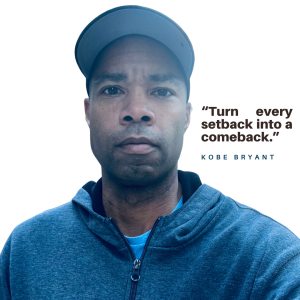
It was bound to happen. And it did. In a spectacular fashion. But if I am being honest, I think I knew it would. Despite the rules. Despite telling myself I was committed. And despite knowing how it could potentially change my life if I just stuck to the plan. So, on my journey to become a digital minimalist, it is [begrudgingly] time for a reset.
Bending Reality
The height of the pandemic — when we were at home and locked down — was a period I look back on with nostalgia. Why? Because it was a time when I thrived. Financially, it was tough, but it was also then that I was free. Free from a job for which I had lost enthusiasm. Free from many social norms that I had always been at odds with. And especially free to do the things I loved (write, run, read, cook/bake) every day.
As the world began to open up again, I desperately wanted to hang on to that state of being, somehow bend reality to make it last longer. While it was good that we were moving out of the pandemic and back to ‘normalcy,’ I knew that I could not go back to the way things used to be. I could not go back to my old job, could not keep doing the same thing over and over. In almost every area of my life, that meant it was time for a reset.
The Case for Digital Minimalism
I found a new job and, of course, it was extremely difficult adjusting to a new schedule and routine after being at home for almost two years. After having so much time to myself to create and do as I pleased, I was back in a nine-to-five job, back to those morning and evening commutes. Instantly, I was writing and running less. It did not take long for my frustration to boil over. That was what led me to digital minimalism. I knew I could still be doing more, even with a day job, if I could just manage my distractions.
If we did the things we are capable of doing, we would literally astound ourselves. – Thomas Edison
Something deeply uncomfortable, or maybe it is more apt to say unsettling, occurred in my earlier attempt this year at embracing digital minimalism. I began to see who I really was instead of who I thought I was. And I did not like what I saw. Like how much time I still spent searching for a movie to watch on Tubi (at the end of August I cancelled my subscription to Amazon Prime and, consequently, Prime Video). Or how I began to, again, reach for my phone and watch my screen time constantly creeping upwards. Not only that, but picking up my device on the way to the bathroom after getting out of bed. Redownloading Fishdom and losing hours to it. And constantly checking news headlines (obsessed with the chaos engulfing the UK’s Conservative Party).
The Aha Moment
During the few short weeks I had succeeded at digital minimalism, its benefits were clearly evident. By focusing my online time on a limited number of optimized activities that support the things I value1, I was often able to work in a hyper-focused, distraction-free state. In a word: I was getting things done.
But for the past few weeks, it has been a struggle. A struggle to finish editing the manuscript. A struggle to create content for, and engage on, social media. And a struggle to write new stories and finish them.
Time for a Reset
So, now it is time once again to fully embrace my rules for a ‘philosophy of technology use’ (you can see them here). It is not a question of scaling back (as I thought in an earlier, unpublished draft of this post), but learning to take back control of my day … one day at a time. In their book, The 12 Week Year, Brian P. Moran and Michael Lennington capture it perfectly: “To be your best, you will need to carve out time to work strategically. You will need to find a way to efficiently handle the low-payoff activities. And you need time to refresh and rejuvenate.”2
Life is a journey, and there are ups and downs along the way. And in the coming weeks, by being cognizant of how I spend my time, I hope to astound myself by doing the things I am capable of doing.
1 Cal Newport, Digital Minimalism: Choosing a Focused Life in a Noisy World (New York: Penguin, 2019), 28.
2 Brian P. Moran & Michael Lennington, The 12 Week Year: Get More Done in 12 Weeks than Others do in 12 Months (Hoboken: Wiley, 2013), 139.
Leave a Reply